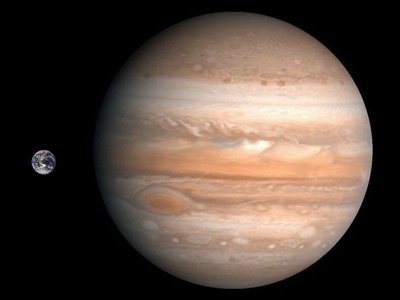May 24, 2010
Weird orbits of neighbors can make ‘habitable’ planets not so habitable
Astronomers hunting for planets orbiting nearby stars similar to the sun are looking for signs of rocky, Earth-like planets in a “habitable” zone, where conditions such as temperature and liquid water remain stable enough to support life.
New findings from computer modeling indicate that some of those exoplanets might fluctuate between being habitable and being inhospitable to life because of the forces exerted by giant neighbors with eccentric orbits.
A lone Earth-like, or terrestrial, planet with a generally circular orbit toward the inner edge of its sun’s habitable zone could be expected to remain within that zone, said Rory Barnes, a University of Washington postdoctoral researcher in astronomy. Adding a planet comparable to Jupiter to the system, however, and giving it a highly elliptical orbit — similar to most exoplanets discovered so far — can cause strange things to happen to the smaller planet, possibly causing it to cycle between habitable and uninhabitable conditions.
The smaller planet’s orbit will elongate and then become more circular again, all in as little as 1,000 years, and could do so repeatedly. That raises the possibility, for example, that its average yearly temperature could change significantly during each millennium.
“For part of the time liquid water could exist on the surface, but at others it would boil off,” said Barnes, who will present the findings Wednesday at a meeting of the American Astronomical Society in Miami.
The effect would be similar for an Earth-like planet at the outer edge of its habitable zone, except that its altered orbit likely would, at times, take it too far from its star, possibly resulting in planetary glaciation.
“The bigger issue here is that the habitable zone is very complicated,” Barnes said. “Earth’s climate is affected slightly over tens of thousands of years by the orbits of other planets in the solar system, but it is possible that in many exoplanetary systems the layout of the planets is very important to habitability.”
The problem becomes even more complex for what could be habitable planets orbiting low-mass stars, perhaps one-third the mass of the sun. In such systems, the habitable zone is much closer to the smaller star, and tidal forces from the star’s gravity are critical in determining whether the planet is habitable. Adding an eccentric orbit of a Jupiter-like planet could greatly alter conditions on the smaller planet as its orbit changes.
“There could be planets out there that have their geological properties change over very long timescales,” Barnes said. “You can imagine planets that cycle in and out of intense volcanism and earthquake stages.”
Tidal forces also fix the planet’s rotation period, and as the orbit becomes more elongated the length of day can change significantly, Barnes said.
“The length of the day changes almost day to day,” he said. “It’s fascinating to think about how evolution occurs on such a world.”
The work, funded by NASA’s Virtual Planetary Laboratory, was conducted with Brian Jackson of NASA’s Goddard Space Flight Center, Richard Greenberg of the University of Arizona and Sean Raymond of the Laboratoire d’Astrophysique de Bordeaux in France.
“There is this crazy zoo of planets out there that probably are habitable,” Barnes said, “but their properties are very different from Earth and they’re different from Earth because of their eccentric neighbors.”
###
For more information, contact Barnes at 206-543-8979 or rory@astro.washington.edu.

